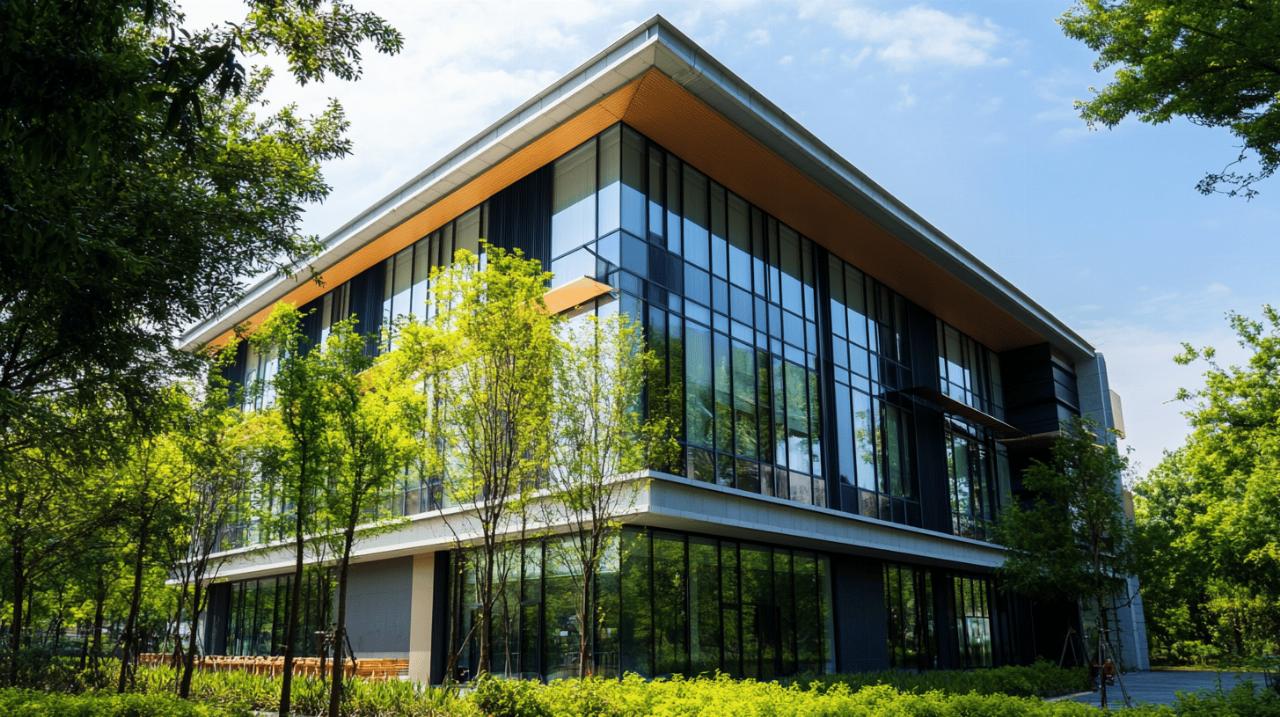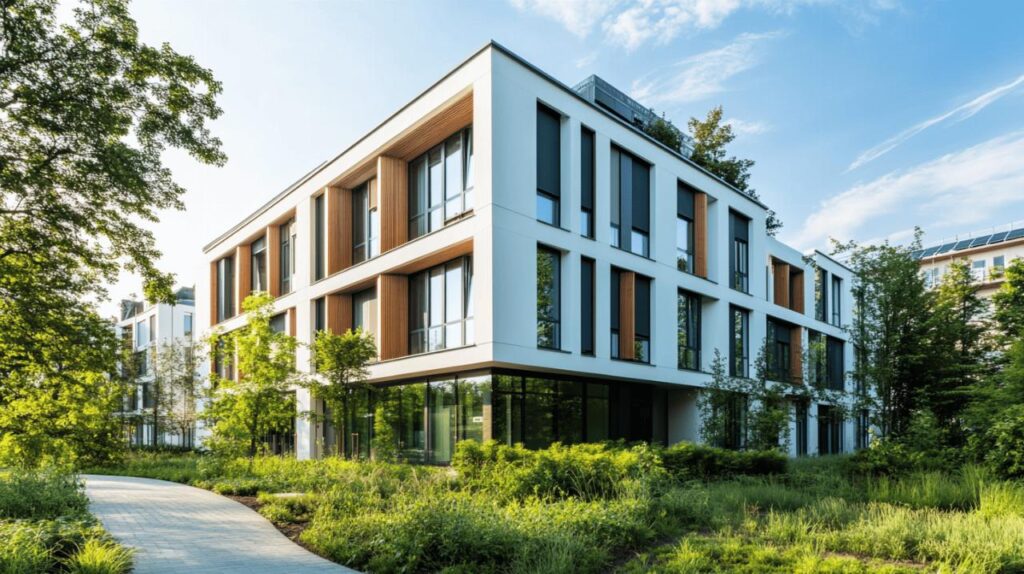Effective thermal insulation stands as one of the most crucial elements in modern building design, playing a pivotal role in creating comfortable living and working environments while significantly reducing energy consumption. With rising energy costs and growing environmental concerns, understanding and implementing proper insulation methods has become essential for both new construction and renovation projects. This comprehensive guide explores various thermal insulation approaches that can dramatically enhance a building’s energy efficiency performance.
Understanding thermal insulation fundamentals
Thermal insulation functions as a barrier that restricts heat transfer between spaces with different temperatures. In building contexts, this principle becomes particularly important as it helps maintain comfortable indoor conditions regardless of external weather variations. The thermal insulation materials work by trapping tiny pockets of air or gas, which naturally resist heat flow. Professional advice from building trade schools such as those found at https://www.scuolaedilerimini.it/ often emphasizes that understanding these fundamentals is crucial for construction professionals seeking to improve building performance.
How thermal insulation works in building environments
The effectiveness of thermal insulation relies on its ability to minimize heat transfer through three primary mechanisms: conduction, convection, and radiation. Conduction occurs when heat moves directly through materials, convection involves heat transfer through air or liquid movement, and radiation transmits heat across empty spaces via electromagnetic waves. Quality insulation materials address all three transfer methods, creating a comprehensive thermal barrier that maintains indoor temperature stability. This comprehensive approach to thermal management is particularly important in creating airtight building envelopes that prevent unwanted heat exchange.
Key thermal performance indicators and measurements
When evaluating insulation effectiveness, several critical measurements come into play. The U-value measures how easily heat passes through a material or structure, with lower values indicating better insulation properties. R-value represents thermal resistance, where higher numbers signify superior insulation capacity. These metrics help construction professionals determine the most appropriate materials for specific climate conditions and building requirements. Thermal bridges, areas where heat flows more readily through the building envelope, require special attention during design and installation phases to maintain overall insulation integrity.
Traditional insulation materials and applications
The insulation market offers numerous time-tested materials that have proven their effectiveness across decades of use in construction. These traditional options continue to dominate many building projects due to their reliability, cost-effectiveness, and widespread availability. Understanding their characteristics helps builders select the most appropriate solution for specific project requirements and performance goals.
Fibreglass and mineral wool solutions
Fibreglass insulation, composed of fine glass fibres, remains one of the most widely used insulation materials in the building industry. Its popularity stems from its affordability, fire resistance, and reasonable thermal performance. Similarly, mineral wool, made from molten rock or slag spun into fibres, offers excellent fire resistance and sound absorption properties alongside its thermal insulation capabilities. Both materials come in batts, rolls, or loose-fill forms, making them versatile for various applications in walls, floors, and attics. Their fibrous nature helps trap air effectively, creating the thermal barrier necessary for energy efficient buildings.
Cellulose and natural fibre options
For those seeking more environmentally friendly alternatives, cellulose insulation made from recycled paper products treated with fire-retardant chemicals offers an excellent option. Natural fibres like wool, cotton, hemp, and straw also provide effective insulation while minimizing environmental impact. These materials excel in moisture management, often allowing buildings to “breathe” better than synthetic alternatives. Many construction professionals appreciate that these materials offer comparable thermal performance to conventional options while aligning with sustainable construction principles and reducing overall carbon footprints in building projects.
Modern and innovative insulation technologies
The insulation industry has seen remarkable technological advancements in recent years, with new materials and methods offering unprecedented thermal performance. These innovations address limitations of traditional materials while providing additional benefits such as improved fire resistance, moisture management, and installation flexibility. Modern building designs increasingly incorporate these cutting-edge solutions to meet stringent energy efficiency standards.
Rigid foam panels and spray foam advancements
Rigid foam insulation panels, including polyisocyanurate, extruded polystyrene, and expanded polystyrene, deliver exceptional thermal resistance per unit thickness. Their structural integrity makes them ideal for applications requiring both insulation and support. Spray foam insulation has revolutionized the field by offering superior airtightness alongside thermal performance. Available in open-cell and closed-cell varieties, spray foam adheres to surfaces and expands to fill cavities completely, eliminating gaps that compromise insulation effectiveness. These advanced materials have become essential components in high-performance building envelopes, particularly in passive house construction where thermal performance requirements are exceptionally demanding.
Reflective and vacuum insulation systems
Reflective insulation systems utilize highly reflective materials like aluminium foil to reduce radiant heat transfer, particularly effective in hot climates. These systems reflect heat away from living spaces, complementing traditional insulation methods. Vacuum insulation panels represent the cutting edge of thermal technology, using vacuum-sealed panels to nearly eliminate heat transfer. Despite their relatively high cost, these ultra-thin panels deliver remarkable insulation values in applications where space constraints exist. The construction industry continues to develop applications for these advanced systems, particularly in situations where conventional insulation thickness would be impractical.
Strategic insulation placement in buildings
Effective thermal insulation requires not just quality materials but also strategic placement throughout the building envelope. Different areas experience varying heat loss patterns and require tailored approaches to insulation. Understanding these specific requirements enables more efficient use of materials and better overall thermal performance in completed structures.
Optimising loft and roof insulation techniques
As heat naturally rises, roofs and lofts represent critical areas for thermal management in buildings. Properly insulated lofts can prevent up to 25% of a building’s heat loss. Techniques range from simple laying of mineral wool between and over joists to more complex warm roof constructions where insulation sits above the roof structure. The choice between cold and warm loft approaches depends on whether the space will be inhabited and how building services are arranged. Professional installation ensures proper ventilation is maintained to prevent condensation issues while maximizing thermal performance.
Wall and floor insulation best practices
Walls typically account for the largest surface area in a building envelope, making their insulation particularly important for overall energy efficiency. Cavity wall insulation, external wall insulation systems, and internal wall insulation offer solutions for different building types. Similarly, floor insulation prevents heat loss to the ground or unheated spaces below. Rigid foam boards, spray foam, or traditional materials can be applied depending on floor construction and accessibility. Special attention to thermal bridges around windows, doors, and structural elements ensures comprehensive insulation coverage throughout the building.
Economic and environmental benefits of proper insulation
Beyond the immediate comfort improvements, investing in quality thermal insulation delivers substantial long-term advantages for building owners and the planet. These benefits make insulation one of the most cost-effective improvements possible in both new construction and renovation projects, with returns that continue throughout a building’s lifetime.
Long-term cost savings and return on investment
While quality insulation requires initial investment, the financial returns become evident through significantly reduced energy bills. Many building owners report heating and cooling cost reductions of 40-60% following comprehensive insulation upgrades. With rising energy prices, these savings accelerate the return on investment period, often recouping costs within 3-7 years depending on climate and building characteristics. Furthermore, properly insulated buildings generally maintain higher property values and appeal more strongly to energy-conscious buyers and tenants, creating additional economic advantages beyond direct energy savings.
Carbon footprint reduction and sustainability advantages
Reducing energy consumption through effective insulation directly translates to lower carbon emissions throughout a building’s operational life. This environmental benefit aligns with both regulatory requirements and growing public concern about climate change. Additionally, some insulation materials incorporate recycled content or renewable resources, further enhancing their sustainability credentials. The building trade increasingly recognizes that thermal insulation represents not just good economic sense but also responsible environmental stewardship. As building regulations continue to emphasize energy efficiency, proper insulation becomes not merely advantageous but essential for compliance with contemporary construction standards.



